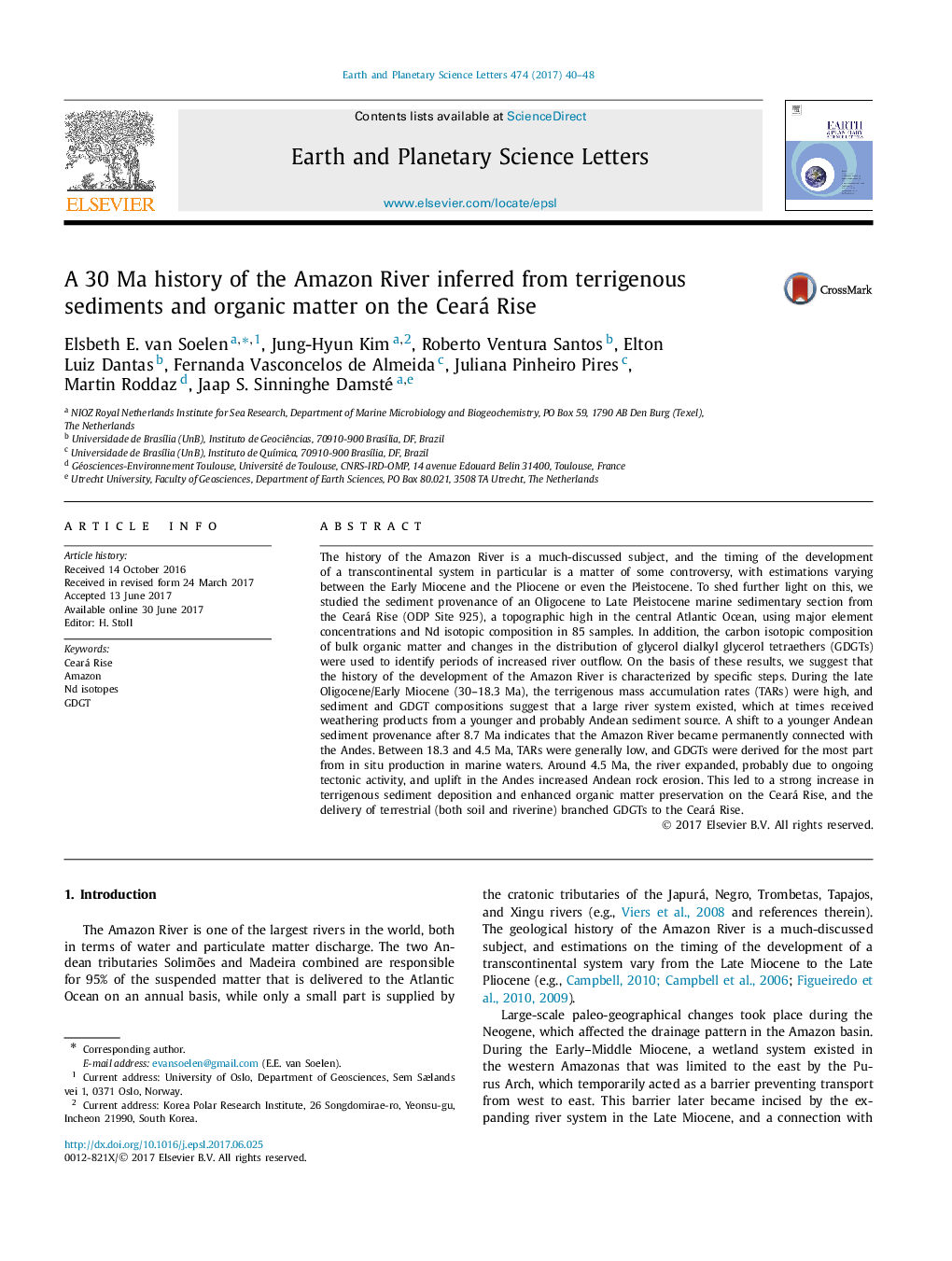| کد مقاله | کد نشریه | سال انتشار | مقاله انگلیسی | نسخه تمام متن |
|---|---|---|---|---|
| 5779717 | 1634682 | 2017 | 9 صفحه PDF | دانلود رایگان |

- The geological history of the Amazon River was studied using Ceará Rise sediments.
- A transcontinental system became permanent around 8.7 Ma.
- A transcontinental system may have existed briefly in Early Miocene times.
- Around 4.5 Ma the Amazon River increased its terrigenous transport to Ceara Rise.
The history of the Amazon River is a much-discussed subject, and the timing of the development of a transcontinental system in particular is a matter of some controversy, with estimations varying between the Early Miocene and the Pliocene or even the Pleistocene. To shed further light on this, we studied the sediment provenance of an Oligocene to Late Pleistocene marine sedimentary section from the Ceará Rise (ODP Site 925), a topographic high in the central Atlantic Ocean, using major element concentrations and Nd isotopic composition in 85 samples. In addition, the carbon isotopic composition of bulk organic matter and changes in the distribution of glycerol dialkyl glycerol tetraethers (GDGTs) were used to identify periods of increased river outflow. On the basis of these results, we suggest that the history of the development of the Amazon River is characterized by specific steps. During the late Oligocene/Early Miocene (30-18.3 Ma), the terrigenous mass accumulation rates (TARs) were high, and sediment and GDGT compositions suggest that a large river system existed, which at times received weathering products from a younger and probably Andean sediment source. A shift to a younger Andean sediment provenance after 8.7 Ma indicates that the Amazon River became permanently connected with the Andes. Between 18.3 and 4.5 Ma, TARs were generally low, and GDGTs were derived for the most part from in situ production in marine waters. Around 4.5 Ma, the river expanded, probably due to ongoing tectonic activity, and uplift in the Andes increased Andean rock erosion. This led to a strong increase in terrigenous sediment deposition and enhanced organic matter preservation on the Ceará Rise, and the delivery of terrestrial (both soil and riverine) branched GDGTs to the Ceará Rise.
Journal: Earth and Planetary Science Letters - Volume 474, 15 September 2017, Pages 40-48